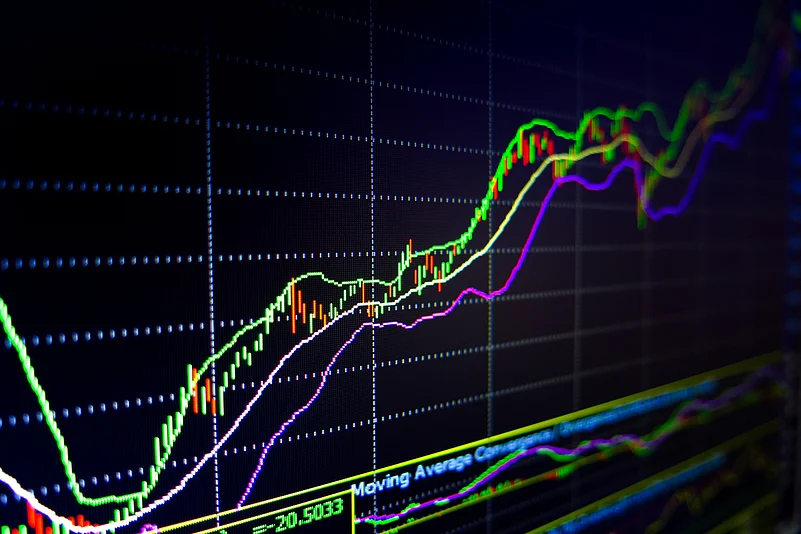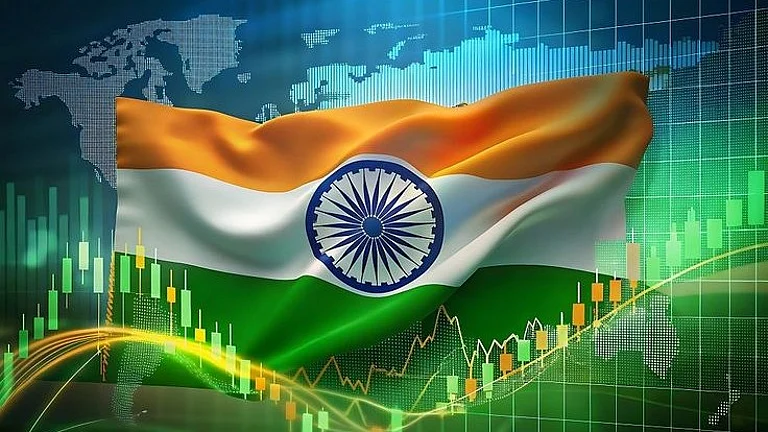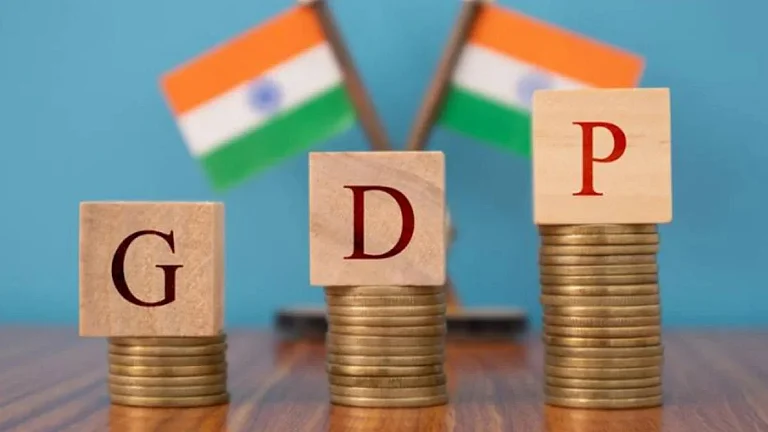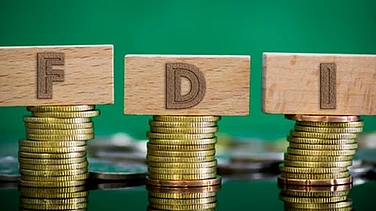India's economy grew by better-than-expected 8.4 per cent in the final three months of 2023 - the fastest pace in one-and-half years, fortifying Prime Minister Narendra Modi's record of providing a world-beating growth rate ahead of general elections.
The growth rate in October-December was higher than 7.6 per cent in the previous three years, and it helped take the estimate for the current fiscal (April 2023 to March 2024) to 7.6 per cent, according to the data released by the National Statistical Office (NSO) on Thursday.
The estimate for 2023-24 is better than the 7.3 per cent projection made in January and exceeds by a significant margin the outlook of 6.7 per cent and 6.3 per cent made by the IMF and World Bank, respectively.
The third quarter (October-December) growth came on the back of a double-digit (11.6 per cent) surge in the manufacturing sector. The services sector too saw a significant uptick, but the agricultural sector saw a modest contraction of 0.8 per cent during the quarter.
Private consumption growth too was sluggish at 3.6 per cent, and according to some economists remains an area of concern in the context of high GDP growth.
Commenting on the growth numbers, Prime Minister Narendra Modi said his government will continue to make efforts to keep fast economic growth. "Robust 8.4 per cent GDP growth in Q3 2023-24 shows the strength of the Indian economy and its potential. Our efforts will continue to bring fast economic growth which shall help 140 crore Indians lead a better life and create a Viksit Bharat!".
The growth rate in the third quarter and projections for the full fiscal mean that India will retain its fastest-growing economy tag, especially at a time when global growth is trending down.
The government's capital expenditure plan for FY25 and the recent announcement on bringing in fresh investments in the defence and manufacturing sector are possibly paving the way for India's increased manufacturing and investment-led economic growth story.
Significantly, the differential between GVA (6.5 per cent) and GDP (8.4 per cent) growth in the third quarter was large. Also needing further exploration is GVA growth remaining at 6.9 per cent for the current fiscal, while GDP growth is being revised upwards to 7.6 per cent.
Also, the average GDP growth for the first three-quarters of FY24 is 8.2 per cent, implying that the fourth quarter growth would only be at 5.9 per cent.
Suman Chowdhury, Chief Economist & Head of Research, Acuite Ratings, said one of the key reasons for the material shift in the GDP print is the revisions in the GDP data for some quarters of the previous fiscal. "Clearly, the higher-than-expected momentum in the economy may lead to a tight monetary policy from the RBI for a longer period and any reversal in the current stance is unlikely over the next 6 months".
The gross domestic product (GDP) growth was 4.3 per cent in the October-December 2022 quarter, according to NSO.
The manufacturing sector's output, as per the gross value added in the third quarter of this fiscal, grew by 11.6 per cent compared to a contraction of 4.8 per cent in the year-ago period.
Mining and quarrying grew at 7.5 per cent in the third quarter, up from 1.4 per cent a year ago. The construction sector kept the growth momentum at 9.5 per cent against the same growth rate in the year-ago period.
However, the output of the farm sector declined by 0.8 per cent during the quarter compared to a growth of 5.2 per cent a year ago.
The national accounts data showed electricity, gas, water supply, and other utility services segment has grown by 9 per cent year-on-year against an 8.7 per cent rise.
The GVA growth in the services sector -- trade, hotel, transport, communication and services related to broadcasting -- was 6.7 per cent during the third quarter against 9.2 per cent earlier.
Financial, real estate and professional services grew by 7 per cent in the third quarter over 7.7 per cent.
Public administration, defence and other services posted 7.5 per cent growth against 3.5 per cent in the third quarter of the last fiscal.
The NSO also released the second advance estimate for the current fiscal and pegged the economic growth at 7.6 per cent against 7.3 per cent estimated in the first advance estimate released in January.
"Real GDP or GDP at Constant (2011-12) Prices in the year 2023-24 is estimated to attain a level of Rs 172.90 lakh crore, against the first revised estimates of GDP for the year 2022-23 of Rs 160.71 lakh crore. The growth rate of GDP during 2023-24 is estimated at 7.6 per cent compared to the growth rate of 7.0 per cent in 2022-23," the NSO statement said.
According to the statement, the nominal GDP or GDP at current prices in 2023-24 is estimated to attain a level of Rs 293.90 lakh crore against Rs 269.50 lakh crore in 2022-23, showing a growth rate of 9.1 per cent.
The NSO revised downward the GDP growth for 2022-23 to 7 per cent from 7.2 per cent estimated earlier.
"Real GDP or GDP at constant (2011-12) prices for the years 2022-23 and 2021-22 stands at Rs 160.71 lakh crore and Rs 150.22 lakh crore, respectively, showing a growth of 7.0 per cent during 2022-23 as compared to growth of 9.7 per cent during 2021-22," the statement said.
The per capita income -- per capita net national income at current prices -- is estimated at Rs 1,50,906 and Rs 1,69,496, respectively, for 2021-22 and 2022-23. Per capita PFCE at current prices, for 2021-22 and 2022-23 is estimated at Rs 1,05,092 and Rs 1,18,755, respectively, it noted.
The NSO has also revised GDP estimates for the first and second quarters of this fiscal to 8.2 and 8.1 per cent from 7.8 per cent and 7.6 per cent, respectively.
The economy has expanded 8.2 per cent in April-December 2023 compared to 7.3 per cent a year ago.






























